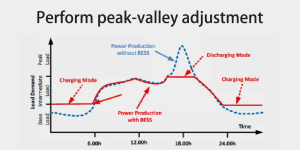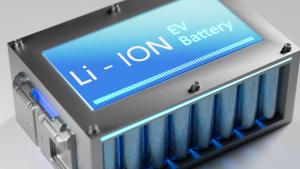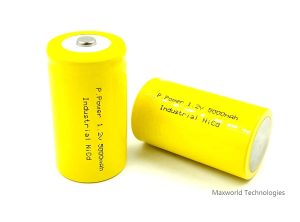Battery Difference-The Lithium Phosphate vs. Lithium Ion

Overview:
A battery is, by definition, any container that contains one or more cells and is used to generate electricity from chemical energy. Batteries are essentially power sources that use chemical processes to produce and store energy for long-term use. In the year 1800, Alessandro Volta, an Italian physicist, created the first real battery. This battery worked well because it used discs of copper and zinc that were separated by salinated water. Although the premise has remained substantially the same, batteries have changed significantly since that time and are now very different from what they were.The following is about Lithium Phosphate vs. Lithium Ion.
Basics of Contemporary Batteries
The transfer of electrons from one material (sometimes referred to as an electrode) to another through an external circuit is necessary for the conversion of chemical energy into electrical energy. When these electrons are suitably guided, an electric current is produced that can be employed to carry out tasks. Fundamental batteries are pretty easy to make at home using a few simple materials; many of us have heard of the potato battery experiment. The electrodes and electrolyte solutions that interact with electrons greatly affect a battery’s efficiency and output. The materials utilized have a considerable impact on the performance of our specialist batteries at Maxworld Power.Lithium ion is a pretty good material.
Using Basic Chemistry
After years of study and development, science and mechanics have shown that lithium batteries—specifically, batteries with a lithium anode—may have the maximum charge density, which means they can provide a significant amount of power. Because of this, lithium batteries are frequently found in automobiles and other types of vehicles, as well as in residences and generators. However, there are two different kinds of lithium batteries, and these two have taken center stage. We shall briefly go over both.Lithium polymer batteries may be a good choice.
Battery Types: Lithium-Ion
Lithium-ion technology is not as chemically or thermally stable as lithium phosphate technology and is a little bit older. Because of this, these batteries are far more flammable and prone to damage. Most of the time, Lithium polymer batteries are a good option because they typically have a discharge efficiency of about 80%.

Batteries Types: lithium phosphate
The resilience of phosphate chemistry under overcharge or short circuit situations allows it to have a longer life cycle. Again, phosphate chemistry is more recent, and some people believe it to be generally more trustworthy. Phosphate batteries are increasingly popular for household power storage even though they have a slightly lower charge density.It will inevitably be usedlithium battery charger.
Due to its technical benefits and an exceptionally high degree of safety, lithium Ferro phosphate technology, often known as LFP or LiFePO4, which first appeared in 1996, is replacing older battery technologies.
This lithium Ferro phosphate technology will be used in heavy-duty (industrial vehicles, marine traction, etc.) or medium-power traction applications (such as AGVs, robotics,last-mile delivery, e-mobility, etc.) because of its high power density
However, LiFePO4 also can be applied in stationary storage in general or energy storage applications (Such as Off-Grid systems applications, stand-alone applications, and self-consumption applications with batteries) due to the extended lifespan of the LFP and the deep cycling capability.lithium battery price is also a relevant issue.

Important benefits of lithium iron phosphate include:
1.>10 years on the calendar
2. Extremely secure technology (No Thermal Runaway)
3. Continual decline or even stability.
4. Inside very little resistance.
5. Very low environmental toxicity (use of iron, graphite, and phosphate)
6. Cycle life: between 2000 to a few thousand (see chart below)
7. Up to 70°C is the operational temperature range.
8. Simple Recycling
9. Across the discharge range, constant power
Lithium Iron Phosphate technology’s life cycle (LiFePO4)
The technology that enables the most charge/discharge cycles is lithium iron phosphate. According to the requirements of the long-life application, this lithium Iron Phosphate technology will be mostly applied in stationary energy storage systems (Such as Off-Grid,self-consumption, UPS, etc.).
Therefore, the real number of cycles that can be run depends on several variables, including:
1. Power output in C-Rate
2. Depth of Discharge (DOD)
3. Lithium cell quality
4. Working circumstances, including the humidity and temperature.
Life Cycle of Lithium Iron Phosphate
The graphic shows the estimated LFP life cycle for a typical environment and 1C cycles as follows:
3000 cycles at full DOD
4500 cycles at an efficiency of 80%
1000 cycles at 60% DOD, etc.
It should be noted that even after a certain number of cycles have been performed, the batteries’ nominal capacity is still greater than 80% of their initial capacity.

Conclusions:
Batteries and inverters are crucial components of the entire system when power storage technology is combined with your new or existing solar. These batteries are typically kept in the home or garage and are very large—at least in comparison to a car battery. Homeowners will therefore desire a reliable choice that won’t be subject to spontaneous combustion under specific circumstances. Lithium phosphate batteries are a wise choice because they are reliable and have long battery lives. At Maxworld Power, we offer lithium-iron phosphate batteries that are flexible, powerful, safe, and powerful enough to give homeowners more control over their homes while also helping the environment and preparing for the future. Feel free to contact Maxworld Power right away if you want to learn more about our batteries.











